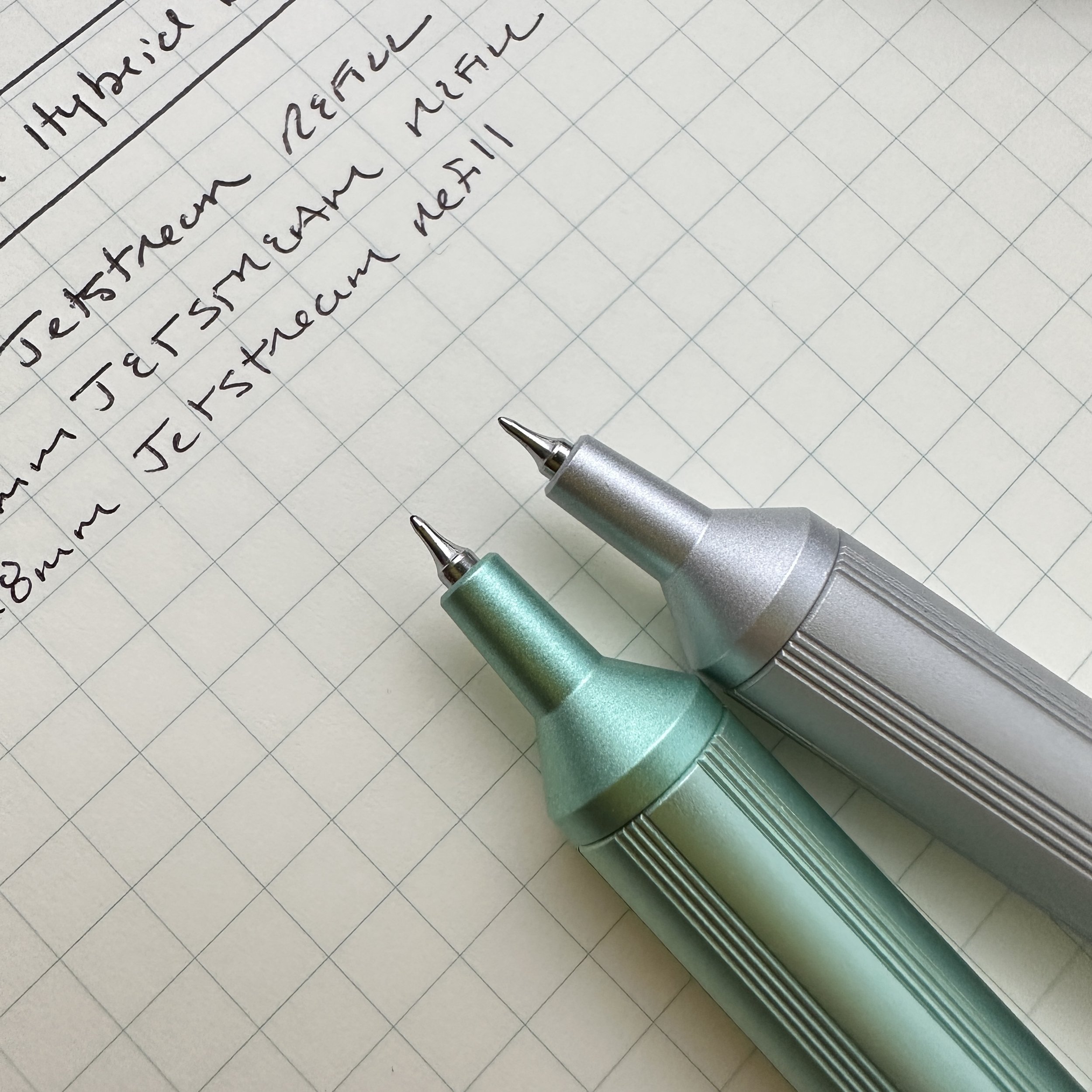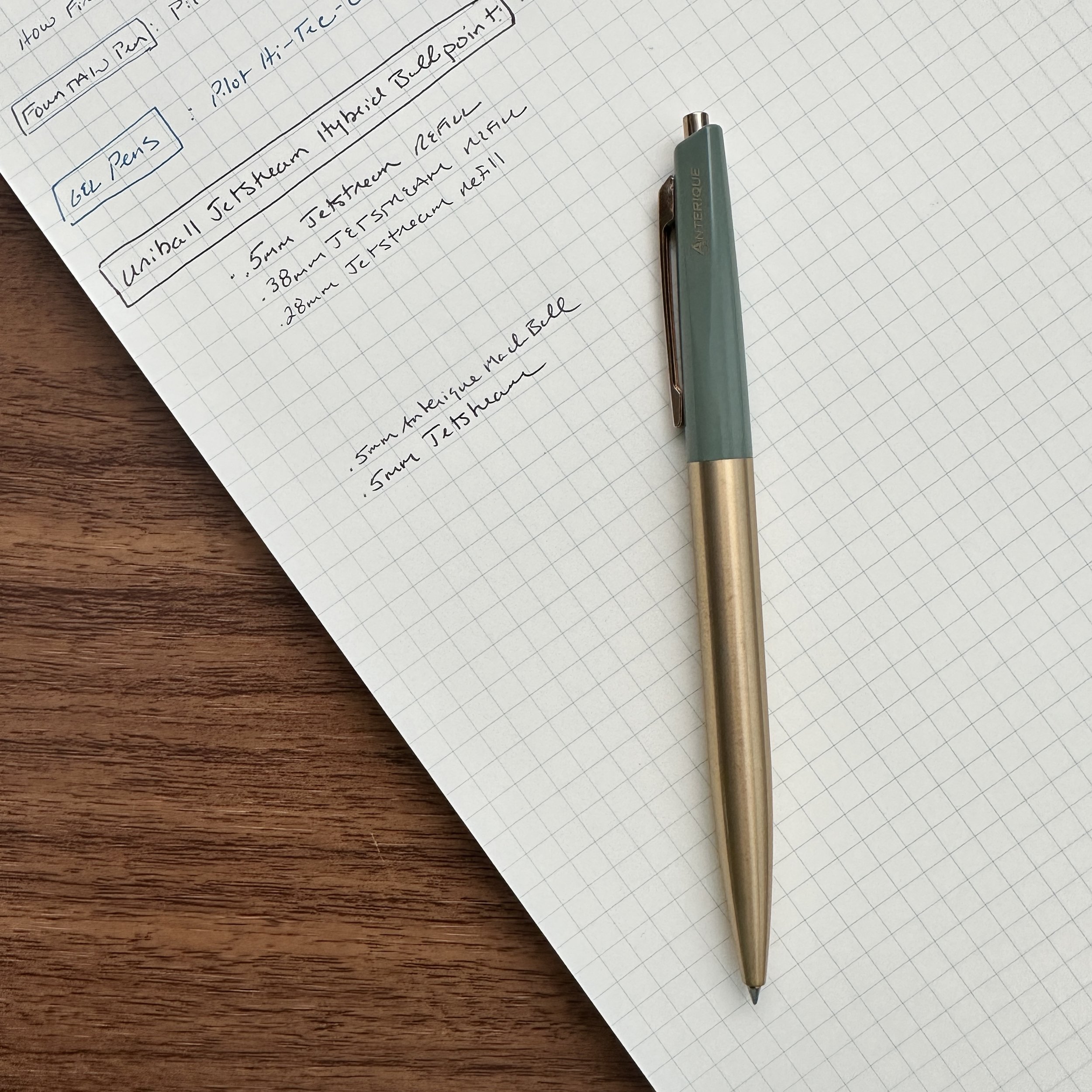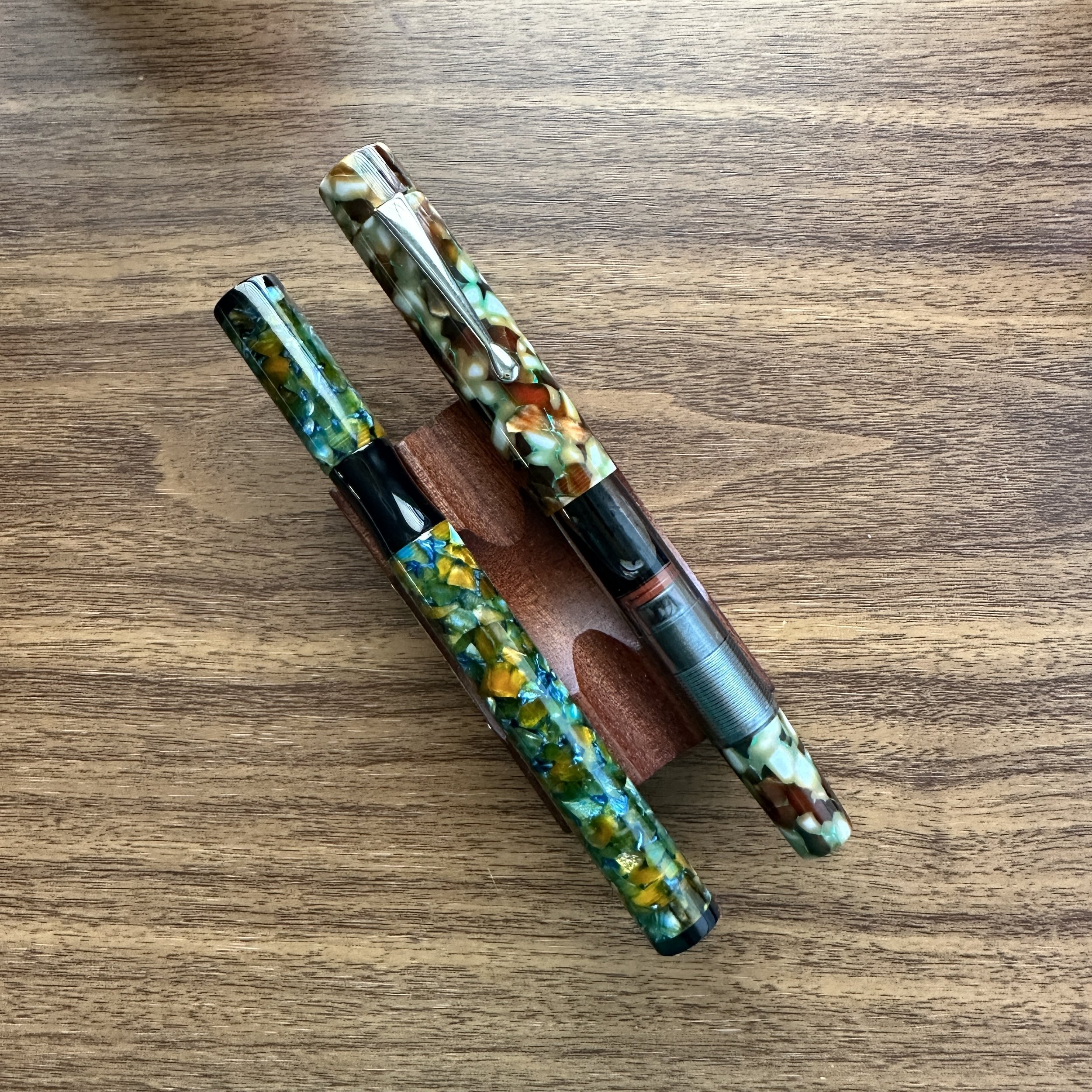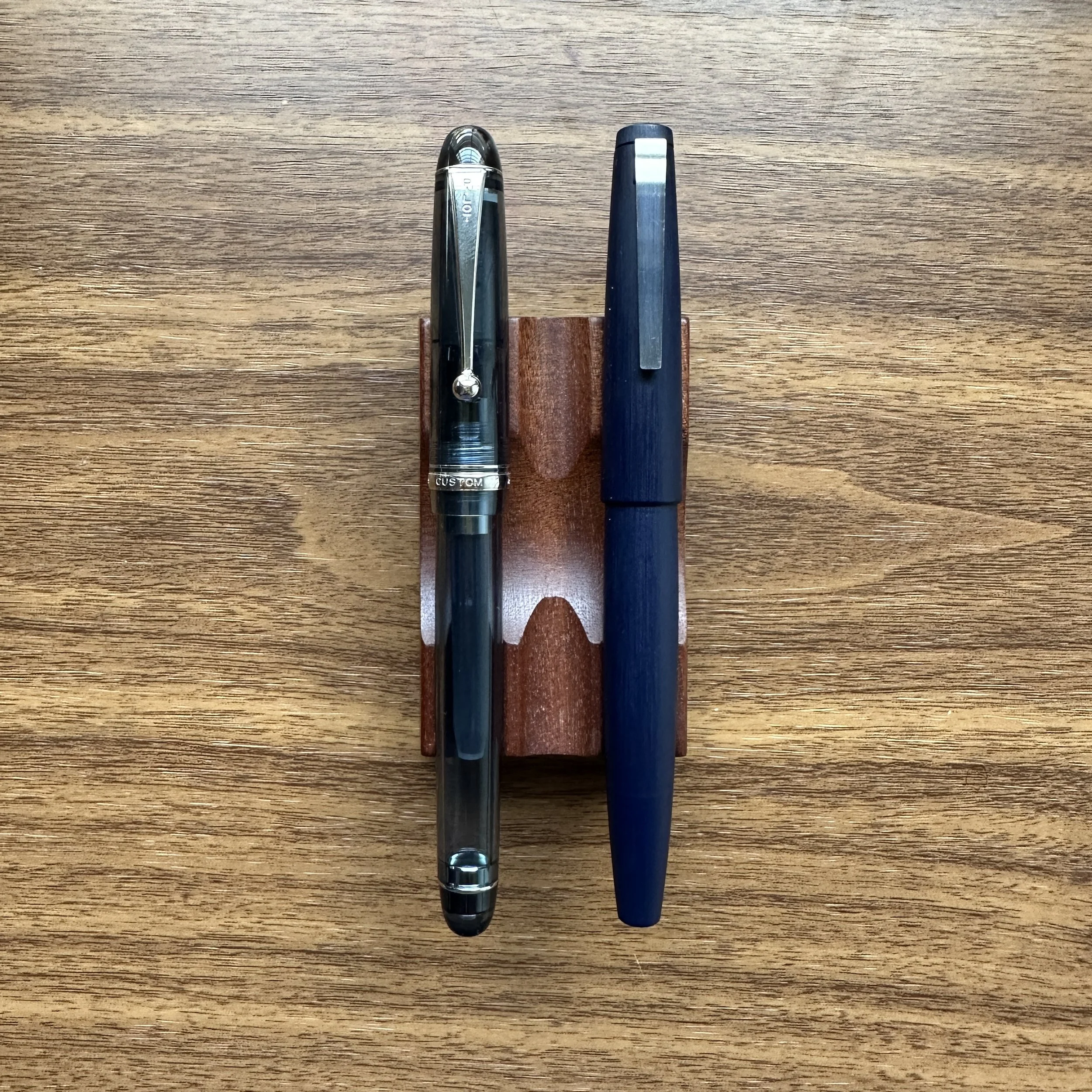I have relatively small handwriting, though I’m something of a special case since I tend to change my handwriting depending on what exactly it is that I’m working on. For standard writing and journaling, I’ll adopt a larger hand for which a medium nib is more suitable, but as I’ve mentioned before, a large portion of the writing that I do involves marking up and annotating documents that can contain very fine print. For work like this, I’ll typically need at least an extra-fine nib fountain pen, though this is where I tend to incorporate fine tip gel pens and ballpoints into my workflow.
My fine writing lineup, from left: Uniball Jetstream 4+1 Multi Pen, Anterique Brass .5mm Ballpoint, Uniball Jetstream “Tokyo Bike” 4+1 limited edition, two Jetstream Edge ballpoints in .38mm and .28mm, Uniball Jetstream 3 Multipen in .38mm tip size, Pilot Hi-Tec-C Coleto Multi Pen, and the Pilot Custom Heritage 912 with a PO Nib.
How fine can I go? Pretty Fine, But There Are Practical Limits.
On the fountain pen side of things, it’s difficult to get a nib that writes as fine as most .28mm or .38mm gel or ballpoint pens. Even if you’re using the Pilot PO (“Posting”) nib, Platinum’s UEF (Ultra Extra-fine), or a Saibi Togi-style nib, water-based fountain pen ink tends to spread on paper, so unless the pen writes fairly dry or you select a drier ink, you may have trouble obtaining the desired line width. For this reason, most of my annotation work is done with a finer gel pen or, more recently, low-viscosity ballpoint pens. I get a lot of questions about the best pen for “fine writing,” so I thought it might be interesting to talk a bit about the different options I rotate through on a regular basis and what my preferences are:
The Pilot PO nib leaves a line that’s roughly equivalent to a .38mm gel or ballpoint, provided you use good paper like the Midori MD pad pictured here.
Fountain Pens. My all-time preferred option for is the Pilot PO (“Posting”) nib, originally intended for addressing mail. It’s a VERY fine, slightly downturned nib that’s relatively dry and, when paired with an ink like standard Pilot Blue-Black, holds a fine line pretty well as long as you are using decent paper. On cheap office paper, however, even this ink tends to spread, which costs you the benefit of the finer point, which is why at the office I always have a gel or ballpoint pen with me.
Gel Pens. I rarely go finer than a .4mm Pilot Hi-Tec-C refill, since below that tip size I tend to run into drying/skipping/clogging issues, plus the writing experience becomes scratchy. My pen of choice is the Pilot Hi-Tec-C Coleto multi pen, which allows me to carry up to four different colors in a single pen body (or three plus a mechanical pencil). Lately, I’ve also added the .4mm Pilot Frixion to the rotation, and have been pleasantly surprised with how well it’s performed. The ink isn’t as dark as other gel pens, but it’s better than it used to be, and I plan to write up a full review of the Frixion once I’ve had more longer-term experience with it.
Ballpoint Pens. Honestly, where I’ve been spending most of my “fine-writing” time these days is in the hybrid/low-viscosity ballpoint category, since I generally find the writing experience smoother and more reliable, even if you go down to the .38mm tip size. I recently posted about my trip to New York City, where I visited Kinokuniya books and picked up a fistful of Uniball Jetstream multi pens, including a .38mm version that I had never seen before. While some claim to have experienced skipping and scratchy writing with the .38mm Jetstream cartridge, I’ve used this pen for years and never had an issue. That said, there’s no denying that a .5mm low-viscosity ballpoint refill is smoother, and unless I need to write really small, my pen of choice is the .5mm Uniball Jetstream (typically loaded into a multi pen) or the one of the .5mm Anterique “Mach Ball” pens.
The Anterique Mach Ball .5mm writes something more akin to a .4mm line - it’s narrower than the Jetstream .5mm despite having the same nominal tip size.
But What's the Absolute Finest I Can Go?
I used to say .38mm, but last month at Kinokuniya I picked up the .28mm Jetstream “Edge”, which features a Rotring-style hexagonal barrel and rounded grip section that some might find more comfortable than your typical technical pen. Check out the difference in tip size from the writing sample below:
Comparing the range of Jetstream tip sizes.
The shocking thing to me is that even at .28mm, you don’t lose that much smoothness or visibility compared to the .38mm. That said, I’m not sure that the .28mm gives you meaningfully more versatility than a .38mm refill for actual writing, as opposed to technical drawing or art where the subtle differences between line widths actually make a difference. Even if the .28mm is usable (which it is!), I’m not sure that there’s a benefit beyond novelty for most people. .28mm probably sets the floor for me personally!
The Gentleman Stationer is supported entirely by purchases from the T.G.S. Curated Shop and pledges via the T.G.S. Patreon Program. This post does not contain paid advertising or third-party affiliate links.




